While historically significant and desirable road cars continue to increase in popularity and value, this trend has translated across to racing machinery. We have seen a few historic race cars sell for significant sums in the past, but this Holden Commodore V8 Supercar could set a new benchmark. Its history is fully documented, and it scores double points for the engine under its hood. However, it will be interesting to see if the buyer can secure a sale at his asking price. Located in Sydney, NSW, Australia, you will find this Commodore listed for sale here on My105.com. The owner has set the asking price at offers over an eye-watering A$2,800,000.
Before we get into the specifics of what makes this Commodore so unique, we probably need to look at a brief history of touring car racing Down Under. It has been the backbone of the Australian motorsports scene since the 1970s, with the country adopting a category called Group C Improved Production from 1973. Eligible models were based on production cars that retained much of their interior trim and upholstery, while their engines, suspension, and tire sizes, were all mandated by the category administrators. However, as years passed, increasing engine powers, politics, and the growing fragility of the racing machinery saw a seismic shift as the country adopted International Group A Touring Car regulations from the 1985 racing season. The world governing body, the FIA, had designed this category as a better mousetrap. It was a formula governed by complex parameters revolving around engine capacity, weight, and tire width. Initially, the category was a success. Potential competitors in Australia could land a competitive vehicle like a Holden Commodore on the track for around $60,000. As is often the case, though, while the FIA built a better mousetrap, some manufacturers decided to build a better mouse. Ford led the charge with its fire-breathing RS500 Sierra, while Nissan followed shortly afterward with its GTR model that was dubbed Godzilla. Costs had spiraled out of control, which decimated Australian fields as owners could no longer afford to field competitive machinery. A solution needed to be found, and from 1993, the country moved to a category that later became known as V8 Supercars. Based on production bodyshells, all cars were powered by a 5.0-liter V8 engine that fed its power to a Ford 9″ rear end via a six-speed Holinger transmission. Category organizers wanted these cars to be loud and spectacular, so in addition to the production body shell, the cars wore distinctive front spoilers and enormous rear wings. The basic architecture remained unchanged until 2003, and that’s where our feature car fits into the equation.
It is widely acknowledged that Holden’s racing arm in the V8 era first appeared in 1990 as the Holden Racing Team (HRT). Owned by Scotsman Tom Walkinshaw, it fell under his TWR umbrella. Pickings were slim under the Group A regulations, although the team scored a debut win in the 1990 Bathurst 1000. Fortunes improved once the new V8 category hit the tracks in 1993. HRT then found itself in an enviable position. Not only were all competitors on an even mechanical footing, but the team could call on a vast resource of engineering expertise via TWR’s involvement in Formula One through Benetton and Arrows. The team secured the services of the legendary Peter Brock from 1994 until 1996, while from 1996, it could also add Craig Lowndes and Mark Skaife to its regular driver lineup. Lowndes secured three championships and a Bathurst win during his time with the team, while Skaife scored many race wins before scoring his first championship for the team in 2000. Our feature car is chassis number HRT 045, dubbed by then HRT CEO Craig Kelly as “The Golden Child.” This was because not only did the vehicle achieve astounding on-track success, but, and this is a rarity, it never sustained any significant damage during its racing life. Debuted by Skaife in 2001 as a “VX” model, the car took the man who had already secured three championships to his fourth in fairly dominant fashion. As icing on the cake, it also delivered him his third Bathurst crown.
Skaife wheeled out HRT 045 for the 2002 season and picked up where he left off. He once again dominated the championship and secured another Bathurst win for good measure. The Bathurst success was particularly significant, as it placed The Golden Child in elite company. The first endurance race at Bathurst occurred in 1963, and during its entire history, only two cars have won the classic on more than one occasion. The first was a Commodore VH that Peter Brock and his co-drivers steered to victory in 1982 and 1983. With wins in 2001 and 2002, The Golden Child remains the only other car to have achieved this feat, making it historically significant in Australian motorsport history. Things changed enormously for the 2003 season as the category introduced changes referred to as Project Blueprint. The changes aimed to bring closer mechanical parity between Holden’s Commodore and Ford’s Falcon. The changes were largely aerodynamic for the Ford teams, but the modifications were significantly more profound for Commodore runners. While the production Commodore ran MacPherson strut front suspension that was homologated for the racing machinery, the Project Blueprint changes saw the front suspension swapped to a double-wishbone configuration similar to the setup that had served successfully under the Falcon since 1993. The car’s rear also ditched its Panhard rod suspension and swapped over to a watts linkage that mimicked the Ford’s. There were also exterior sheet metal changes to the hood, front fenders, and rear quarter panels to mimic the update from the older VX model Commodore to the newer VY model. Skaife won in the newly configured car on debut and continued to use the vehicle until the middle of the season. It was then retired from active duty and served as a spare. It was pressed back into duty briefly at the end of that year, but its racing career was over.
It seems that nobody was ever allowed to change The Golden Child substantially, and there was an unwritten law within the team that the team should retain it as Mark Skaife raced it. The team returned it to its VY racing livery, and Skaife retained ownership of the vehicle for nearly a decade. It then passed into the hands of a private collector, and it is this individual that has now placed the Commodore on the market. If its competition record hasn’t already scored it a rightful place in Australian motorsport history, the 5.0-liter V8 that resides under the hood should seal the deal. It is not an engine that ever served in this car, but it holds a special place in Bathurst folklore. The Kmart Racing Team in 2003 was also engineered under the umbrella of HRT. While it operated as a separate entity, it sourced its equipment from HRT, and their cars were technically identical to those run by HRT. The Kmart team went to Bathurst in 2003 with high hopes of success, and they delivered in spades. One of the legendary moments during that weekend was driver Greg Murphy’s qualifying lap during the Top 10 qualifying runoff. It has since been termed “The Lap of the Gods” and took a V8 Supercar into uncharted territory when he was the first driver to complete a qualifying lap in under two minutes and seven seconds. While his qualifying time has since been eclipsed, the figure of 2:06.8594 blitzed the second-fastest time by more than a second, which was unprecedented in V8 Supercar history. The entire lap is available in this YouTube video, and it is worth watching. It is the engine from that car and that lap that you will find under the hood of The Golden Child.
The Golden Child, or to give it a more accurate name, HRT 045, is one of the most historically significant vehicles to grace an Australian racing circuit. Its competition history is documented, and its Bathurst successes undoubtedly cements its legendary status. It is also one of the most significant race cars to come onto the market in recent history. That begs the question of whether the current owner will achieve his lofty sale price. While the classic road car scene makes it easy to determine the ultimate value of any car, the waters are muddier in the competition sector. We have seen other V8 Supercars cross the auction blocks and achieve figures of around $1,000,000, but the asking price is nearly three times that figure. I can’t say with any certainty whether it will sell, but with wholesale rule changes destined to occur in 2023 and the Holden name set to disappear from the premier category forever, I wouldn’t be surprised if he does.
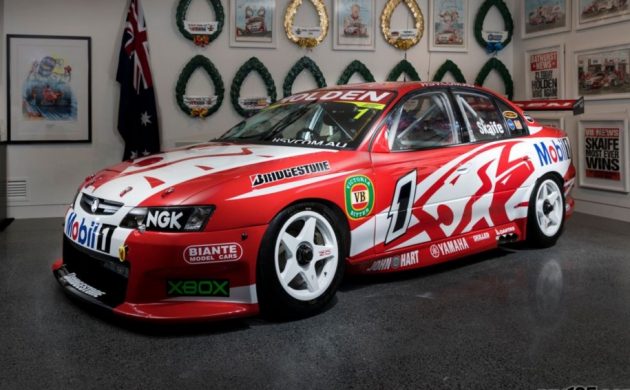

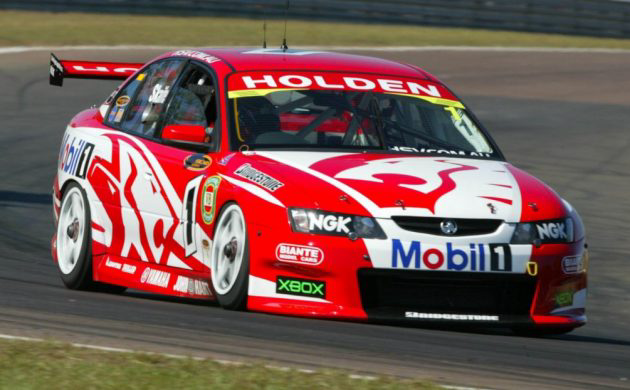
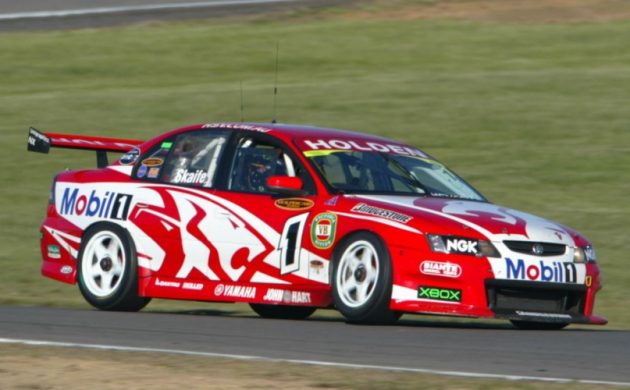
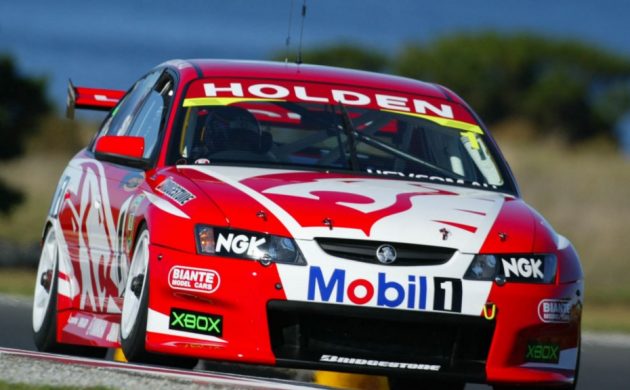
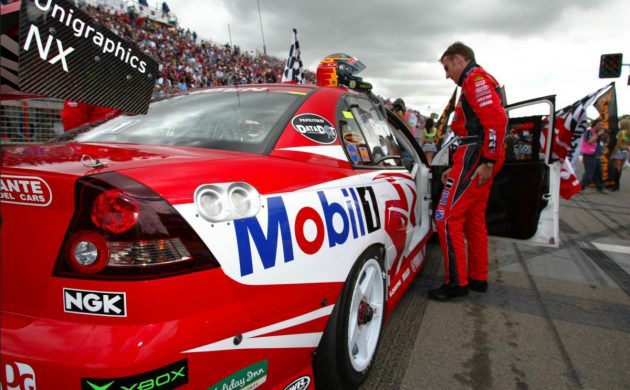


Australian muscle cars from 40-50 years ago way overpriced compared to their American peers. At least by three times, if not five times. It’s crazy, over the top in my opinion. Look it up for yourselves.
This Aussie agrees Dave. For the price of a tarted up Fairmont, you can have your choice of Euro classics or American muscle. Or both. And it was Project Blue Oval.
Yes buy look how much money almost any old or new Porsche’s are selling for.And don’t forget VW buses no matter what shape they are in.This car is a piece of Aust.race history.
I’m the handsome chap at 2.45 waving his hat. We knew it was fast, we didn’t know just how good it was. The ford apologists were stunned, silent.
My Holden , I mean Chevy SS was a hot machine. Chevy screwed up again. Never marketed the car and it died a silent death in 2017. Yes Holden s r special cars
Put me down for NO.
Thanks, Adam. A brilliant write up on the car and a section of Aussie car racing history. It was a great read.
Nice……….
We see cars that come and go with documented history however, this one has serious “Cred.”
I remember it well. Skaify at his best. AND the power plant that rocketed Murph around the “mountain” in record time.
I’d certainly put my hand up if the bank account allowed. 😁